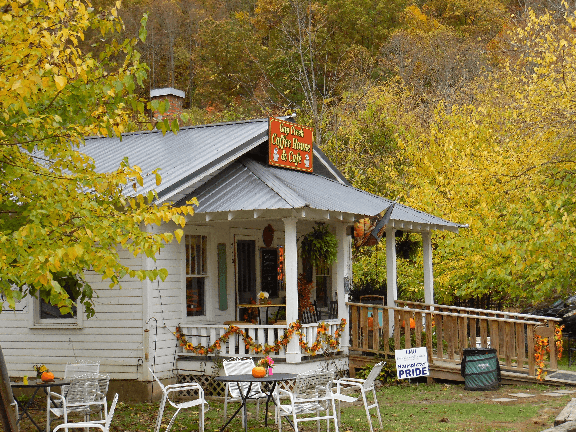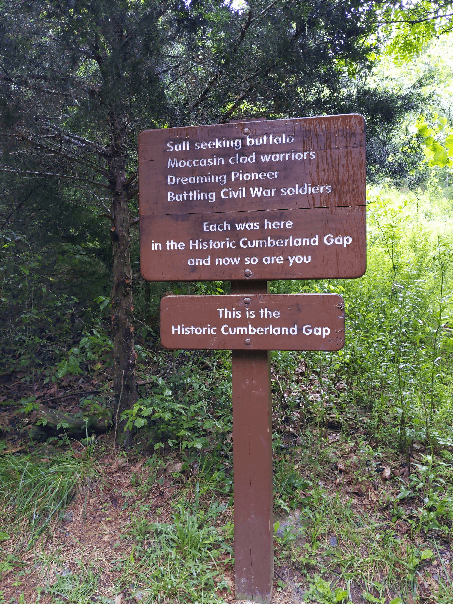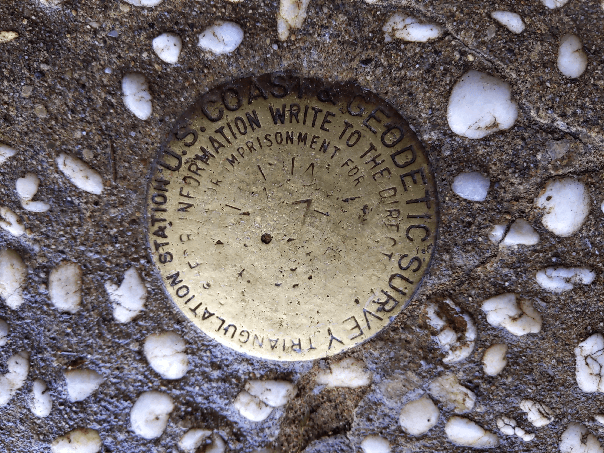Routinely in the sixties and early seventies my parents would load me up with my kid brother in a borrowed station wagon and buzz down from Chicago to Asheville, NC as fast as centrifugal force and the likelihood of sliding sideways over the edge of a mountainous road would allow.
Dad always drove and he always seemed to be in a hurry, my guess, now with the benefit of hindsight, is that vacation didn’t quite begin for him until he had dumped his offspring off with his parents-in-law so that he might slake his thirst for alone time with his young and pretty bride.
He was not a hover parent. Hover parents had not yet been invented. Nor for that matter was there such a phrase as free-range parents though that expression retroactively comes much closer to describing our parents’ parenting style. Nor were they overconcerned with the quality of the quality time we might be having with the grandparents in their absence.
I don’t recall mom and dad dallying long enough to take the grandparents out to supper. They didn’t linger, not even briefly to pause on the front porch. It was magnanimous of them really to slow down and stop the car long enough for us to step out onto the curb with our belongings.
The trip down in consequence was a blur. Dad didn’t believe in stopping anywhere. Certainly not at Stuckey’s to get one of their pecan logs made famous to my brother and me by their billboards which popped up every fifty feet or so along the side of the road for the whole trip south.

He didn’t believe in stopping at trading posts either where one could purchase a leather jacket with fringe just like the one Tonto wore, sparklers, black cat firecrackers, cherry bombs and M-80s, in case you had an urge to see if they were as potent as your cousins had bragged about and you really could blow up a porcelain toilet. We didn’t stop for arrowheads, rubber tomahawks, bow and arrows, postcards of virgin Indian maidens, beads, moccasins, bears in cages, any of that cool stuff.
These roadside attractions were “tourist traps” according to our father. We always passed by the Gap and only heard of a mythical location where three states converged to a point. Even as young children, we understood that a point was a mathematical concept, an abstraction more than a location, but we wanted to see it anyway.
So, the myth of the three states converging to a point survived those many trips down south. Survived my childhood, survived my grandparents.
As an adult, while on my own pilgrimages to Western North Carolina, I sometimes took a side excursion to Cumberland Gap just because I could, to enjoy the cozy nestled-in feel of the place, a tiny hollow snug with the mountains with a population that dares not exceed 500 persons and a tiny white clapboard chapel which for decades has wed elopers darting in from neighboring states.
This year I was zooming past on my return from the 2021 edition of the Wildacres Writer’s retreat, it was a fabulous and productive time (if you’re a writer you need to check it out), when my eye caught a sign for the Gap, I gave a whimsical flick of the wheel and steered my van in the indicated direction. Only I forgot that it begins with the apprehension that you are traversing the parking lot of a coin-operated laundromat before the road starts looking like a proper road with a lane in each direction for traffic.
Once the road starts looking like a road, it is a charming little descent into town. I had a sandwich at a pub before driving to a trailhead, remembering that while I had been to that spot before I had no recollection of hiking the trails. The only way to remedy that was to hike up one and settle it for all time.

I left the lot briefly to tank up on coffee at the Gap Creek Coffeehouse, two blocks into town before returning, parking again, and starting my ascent.
If you travel the U.S. a lot on roads, you will pass by dozens and dozens of small towns with “historical” downtowns and districts. You will rapidly conclude that we, as a nation, are historically addled. I wonder how Europeans might take it if they ever toured the states by motorcar. Three burgs into it and they would be convulsing with laughter if not peeing in their pants.
It would be ironic enough for a person coming from Paris or Prague, imagine instead a resident of Athens who can look out a window to see soaring above the fence in his backyard, the Parthenon. Yet, despite the relative youth of our nation, we have our sites that can inspire awe. (If you have any doubts, plan your next trip to the civil-war battlefield of Antietam in Maryland.

On the trail, I quickly came to a sign explaining that Daniel Boone and some others had pioneered the gap as a passageway that broke through the Appalachian Mountain range permitting settlers to reach deeper into the interior of a vast, untamed wilderness in search of a new life. Their feet tread where might feet tread. They brought their families, the more privileged of them might have a horse to share. They came over in the gap in the winter DELIBERATELY so they could be ready to plant at the first sign of spring. You quickly formed the idea that these people were desperate in a way we’ve lost a knack for grasping, who must have had stories of hardship like the people who brave the Rio Grande and at great risk come over the border from Mexico.
When it staked the all-too-familiar “historical” claim, I was all in. The legend had already convinced me that I was on hallowed ground.
I turned to the fork that put me on the trail to the three-states peak, which immediately took me past the ruins of an early iron foundry that looked more like a grain than a steel mill. The remaining structure could have been part of a Mayan ruin.
The trail turned sharply up hill. A signed promised me it was 1.2 miles to the peak. Peak makes me think of a bald surface with a crown of snow around it like the head of a monk. It also makes me think that there was a bit of a climb in store.
I greeted a young couple coming down the path toward me with the question, “was it worth it?” only aiming to tease out a little encouragement, an old, usually reliable trick. The girl assured me it was a challenge and gave me a winded look to back it up. This put her guy friend in a quandary. How could he encourage me but not encourage me at the same time? What if I had a heart attack half-way to the top—in part due to his dubious advice—that would saddle his conscience for the rest of his breathing days? I could see the gears turning inside of his skull. Then, he said if I was in good hiking shape it shouldn’t be too much of a struggle.
It made me wonder, did I look that old and fragile? And then I thought that I had just come from a few moderately strenuous hikes in North Carolina, a pair of them along the length of the Deer Lick Trail, all uphill up until the turning point, a scenic overlook by the side of the Blue Ridge Parkway, with friends Art, Tucker, and Jane, and that people tended to underrate me anyway. I left them feeling freshly emboldened.
The next couple was more encouraging but left me with the ominous warning, “when you see a bench along the side of the trail, use it.”
It took me what seemed like a long time to reach the bench and when I did, I didn’t feel like stopping. I pressed on with the immediate effect of wondering what level of bone headedness caused me to ignore well-meaning advice and pass up on a chance to collect myself.
For most of the climb, I enjoyed the foreboding rumble of thunder from distant mountains. Now somewhere past the half-way mark, it started to drizzle. The trees on the side of the mountain mostly protected me from the rain even as it picked up tempo. Instead of moisture, doubt started to seep in. I had visions of breaking out into the clearing of the mountain peak in time to get skewered by a bolt of lightning.

I pressed on. My interior monologue of braggadocio alone would not permit me to slink down the mountain now. The rain picked up, turned into a downpour. I didn’t exactly see the point of running out to expose myself. I could see light from a break in the trees ahead indicating I might be coming toward the peak. Then I saw a gazebo roof! What was a gazebo doing way up here? I broke for it. If need be, I could weather the storm under cover. Then, I realized the gazebo crowned the peak. I had made it.
Looking down at my feet, there was a marker put there by the United States Geographical Service marking the exact spot where the three states came together, a casual affirmation of a boyhood fantasy. Woohoo! Sometimes dumb luck is the cleverest thing going.

Leave a Reply